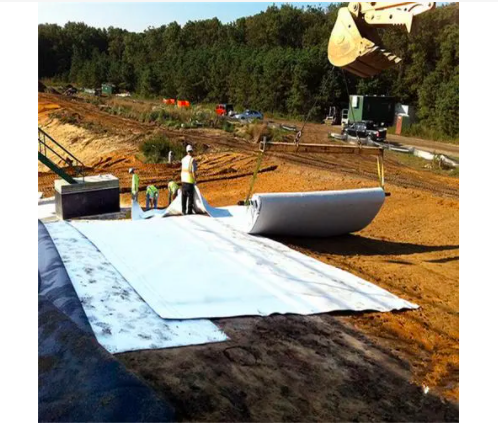- Understanding the Role of Geomembrane Liners in Waste Management
- Innovations in Geomembrane Liners for Water Management
- Geomembrane Liners: A Comprehensive Guide
- The Future of Geomembrane Liners in Civil Engineering
- Geomembrane Liners: Enhancing Landfill Stability
Manager:
WhatsApp:+86 177 0135 2670
Tel:+86 177 0135 2670
Email:marketing@okorder.com
Address:3rd Floor, No.2 Building, No.1 Sanlihe Road
Unsung Heroes of Modern Engineering: The Geotextile Filtration Fabric
In the elaborate choreography of infrastructure development that defines our landscapes, there is an almost invisible yet potent force which silently guarantees their stability and longevity. This force is called geotextile filtration fabric which is a versatile and important component having a lot to do with building retention walls from soil or managing drainage systems among other such applications. It is neglected in spite of its critical importance, with more attention given to its contributions rather than its functions because it rarely appears on stage but never leaves one wondering about the resilience of our structures.
The Complexity of Filtration: Design and Interaction
To design a geotextile fabric for filtration is like forming different layers in fine art masterpiece. Among other things, the interaction between Geotextiles and base soils is influenced by several factors including hydraulic gradients, flow conditions as well as soil geotechnical parameters. Allowing unimpeded fluid flow while preventing migration of fine soil particles requires delicate balance achieved strictly according to retention and permeability criteria.
A Fine Balance: Retention and Permeability
The criterion for retention plays an indispensable role in designing geotextile filters usually based on the average opening size of the filter material and an indicative diameter for soil particles. Once internal erosion sets in, significant volume changes may occur causing catastrophic failure of structures if not properly controlled.
Limit States and Their Implications
Designing geotextiles filters involves considering various limit states associated with erosion, blinding, clogging or flapping; each state brings specific challenges to structural integrity and performance. For example, blinding happens when fine grained particles accumulate at the interface between soil grains leading to lowly permeable zone thereby increasing pore water pressure that can endanger structure’s stability.
The Influence of Main Factors: Clogging and Beyond
Geotextile filter clogging can result from particle accumulation as well as chemical precipitation or biological growth. The gradient ratio test and other experimental methods evaluate geotextile filters for granular soils and provide useful information about their efficacy and limitations.
The Role of Vertical Effective Stress
Vertical effective stress plays an important role in the design of geotextiles filters, especially when dealing with needle punched nonwoven geotextiles. This stress increase may lead to changes in the pore size distribution reducing permeability and retention capacity of the geotextile. It is very important that this effect is understood and taken into account when designing and installing a geotextile filter.
Empirical Criteria and Experimental Methods
In many cases, empirical criteria are applied in order to assess the suitability of a particular base soil for use with a given type of filter material in the field of geotechnical engineering; theoretical retention design criteria however offer a better insight into interaction between base soil and warn fabric. It is essential to have experimental techniques to determine characteristic opening size and pore size distribution if one wants to properly select the shape and size for a filtration system made from textile material which is going to work under specific conditions.
In Stitched Conclusion
The geotextile filter cloth is more than just a material; it is the silent sentinel that stands as the watchdog over the integrity of our engineering masterpieces. This material’s ability to trap and retain sediments while allowing passage for water flow is critical in maintaining long term performance and safety of these assets. As we continue to push the limits of engineering and construction, the importance of geotextile filter fabric will only increase with time, being an embodiment of our commitment to building strong durable structures.
Geotextile filter fabrics may be invisible to the naked eye but their influence on civil engineering can never be masked. The next time you pass by a reinforced soil wall or admire how efficient a well-designed storm water drainage system can be, remember that unseen hero who brings them into existence-geotextile filtration fabric- a silent watchman who wants no accolades except for an opportunity to serve.
Unseen forces often provide the greatest support in geotechnical engineering. One such force is represented by geotextile filtration fabric which despite not enjoying the limelight, plays a crucial part in sustainability and durability aspects of our projects. It’s high time we acknowledged this textile material and utilized its potential to promote more resilient habitats. Working together with geotextile filtration fabric means that we have infrastructures that are not only able to stand firm but also last forever.

- Previous:Landscape Fabric Geotextile: The Silent Power
- Next:Geotextile Landscaping Fabric: An Unrecognized Hero of Outside Areas






